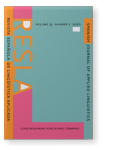Vol. 33:2 (2020) ► pp.475–504
Vol. 33:2 (2020) ► pp.475–504
When bilinguals outperform monolinguals
Evidence from definite and bare noun phrases in Spanish and English
This study explores cross-linguistic influence among different populations of Spanish-English bilinguals by studying their interpretation, production and acceptance of definite articles in subject position. The three bilingual groups included Heritage Speakers of Spanish living in the United States, L1 English/L2 Spanish speakers, and L1 Spanish/L2 English speakers. Two groups of monolingual speakers (Spanish and English) were also tested for comparison. Results show that instructed bilinguals outperformed monolinguals on the acceptability judgment task but that monolinguals performed better on the interpretation tasks. Additionally, the type of linguistic experience each group had was found to predict variable performance across acceptance, production, and interpretation tasks. These results support multi-competence models of bilingualism, which argue that language performance is linked to language experience, suggesting that variable amounts of exposure rather than age of onset of acquisition may be the crucial difference between first language and second language speakers.
Article outline
- 1.Introduction
- 2.Previous research
- 3.The structure under analysis
- 3.1Bare and definite nominals in Spanish and English
- 3.2The acquisition of bare and definite article distribution
- 4.The study
- 4.1Participants
- 4.2Tasks
- 5.Results
- 5.1English acceptability judgment task
- 5.2Spanish acceptability judgment task
- 5.3English elicited production task
- 5.4Spanish elicited production task
- 5.5English interpretation task
- 5.6Spanish interpretation task
- 6.Discussion and conclusion
- Acknowledgements
- Notes
-
References
